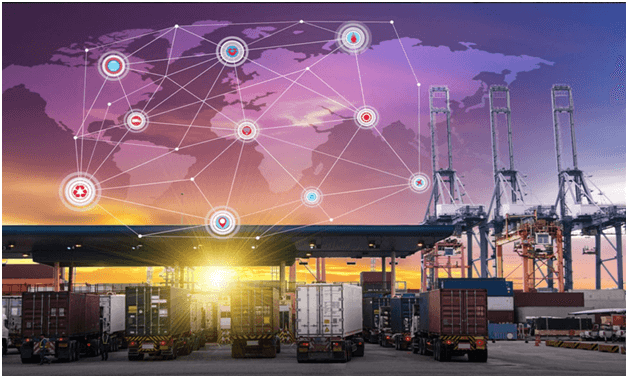An integrated freight solution works by optimizing and efficiently supporting shippers’ demands by introducing a new degree to existing transportation. Shippers benefit from increased coverage and the ability to grow their assets as needed with this specialized solution. It offers the equivalent of dependability, customer care, and control that a shipper would expect from a personal fleet. This process includes developing an optimum transportation infrastructure for a brand-new market or product, also as well as calculating a cost structure. This article discusses the key factors for integrated freight operations.
Table of Contents
Freight Consolidation
When a company does not have enough shipments to fulfill a container to capacity, operating costs go up. In the end, the company will be unable to compete in the market. The demand for containerized shipping from the worldwide market has risen in tandem with the expansion of trade and commerce. Container constraints, traffic, lengthier wait times, non-strategic transportation, also as other factors have all contributed to higher shipping and transportation costs.
Freight consolidation is the process of consolidating multiple small shipments into one large shipment. This implies that several businesses can work together and use a single container or vehicle for their goods, depending on their needs. When the combined cargo reaches its ultimate destination, the deconsolidation procedure will separate individual packages and deliver them as needed. Shipping costs are lower when there are a greater volume of freight. Most businesses (with Less Truck Load shipments) can consolidate their shipments through freight consolidation and deconsolidation. As a result, companies economize on container tariffs and other freight charges by avoiding the price of hiring a whole container or truck.
To assure proper delivery, shippers must have a radical understanding of how consolidation works. One of the basic consolidated shipping practices is to choose a reputable consolidator with a proven track record so that shippers can be confident that all shipments will be properly accounted for.
Warehousing Services
Warehousing has become increasingly important within the supply chain over the last 20 years. The responsibilities of warehouse operators have expanded from maintaining and servicing long-term storage of commodities and products to assisting their customers with the procurement, manufacture, and transportation of goods, allowing them to determine a time-based supply chain strategy. Warehousing is valued because it helps reduce costs, improve service, increase flexibility and increase responsiveness.

Warehouses provide value within the supply chain in the following ways:
- Store products to meet the demands of customers.
- Customers can get a variety of products from warehouses.
- Customers postpone or delay inventory by storing items in one location until demand is known.
- Materials and goods from 3PL or various third-party logistics providers will be sorted at the warehouse.
- Some warehouses can also provide services such as lightweight manufacturing, assembly, and kitting.
The customer receives their products in numerous critical forms. For instance, the staff of the primary row of a warehouse is typically the primary defense when it involves guaranteeing the accuracy of the merchandise, the right amounts, adequate shipping, and delivery times occur, also because the accuracy of all documentation is vital. More importantly, the store’s staff guarantees that the overall conditions of its products are perfect so that they do not receive any damaged product.
Custom Brokerage
The task of physically transporting goods through international borders is comparatively simple in most cases. Making sure the right documentation habits are in situ is often far more complex. Customs runners have the responsibility to ensure that the required customs processes are incorporated into the overall supply chain process. The information is communicated to the external operators in a very timely manner as supply chains become increasingly complicated which include one or more border passages. Customs service providers do have the expertise and knowledge to effectively deal with international trade specialists. Dealing with importers and authorities to ensure that the load is clear and delivered on time and fully compliant with customs requirements.
An experienced customs agent or service provider checks the business documents properly before the summit and ensures that each inaccuracy is detected and corrected. Customers will be confident that their customs declaration processes are timely for the goods being transported which the declaration process is administered carefully, quickly, and profitably.

Freight Network
Freight forwarders offer over just plane tickets and ocean cruises. They also aid in the formation and maintenance of relationships between carriers, shippers, port officials, and other forwarders. Strong partnerships may speed up shipments and improve the likelihood of obtaining lower shipping prices. As a result, forwarder connections cannot only reduce overall friction between supply chain stages but will also provide value to the rock bottom. Without healthy alliances, competing within the market with shipping behemoths like UPS and FedEx would be practically impossible. With numerous agents all around the globe, one of the major benefits of a network is a global presence.
The full content is only visible to SIPMM members
Already a member? Please Login to continue reading.
References
Brian Baklenko. (2017). “What is Consolidated Shipping & How Can Shippers Benefit?”. Retrieved from https://www.chrobinson.com/blog/freight-consolidation-bridging-gap-ltl-full-truckload-2/, accessed 11/09/2021.
Campbell Smith. (2021). “3 Ways to Improve Customer Satisfaction in Last Mile Delivery”. Retrieved from https://blog.ptvgroup.com/en/city-and-mobility/customer-satisfaction-last-mile-delivery/, accessed 11/09/2021.
Cyrus Calvin dela Cruz, ADLSM. (2019). “New Technologies to Manage Freight Shipments”. Retrieved from SIPMM: https://publication.sipmm.edu.sg/new-technologies-manage-freight-shipments, accessed 11/09/2021.
DDC FPO Solutions. (2021). “How Brokerage and Duty Overpayment Hurt Your Bottom Line”. Retrieved from https://www.ddcfpo.com/freight-process-insights/how-brokerage-and-duty-overpayment-hurt-your-bottom-line, accessed 11/09/2021.
Florian Frese. (2020). “Freight Forwarding Networks | Overview, Benefits & Comparison”. Retrieved from https://container-xchange.com/blog/freight-forwarding-networks/, accessed 11/09/2021.
Gharu Mandeep Singh, DLSM. (2019). “Essential Considerations for Digital Transportation in Logistics Chain”. Retrieved from SIPMM: https://publication.sipmm.edu.sg/essential-considerations-digital-transportation-logistics-chain, accessed 11/09/2021.
Ng Song Heng Andy, DLSM. (2020). “Real-Time Location System for Distribution Logistics”. Retrieved from SIPMM: https://publication.sipmm.edu.sg/real-time-location-system-distribution-logistics, accessed 11/09/2021.
Tom K. (2017). “Integrated Transportation Solution: How Does It Work?”. Retrieved from http://www.leansupplysolutions.com/blog/advantages-integrated-transportation-solution-logistics/, accessed 11/09/2021.

